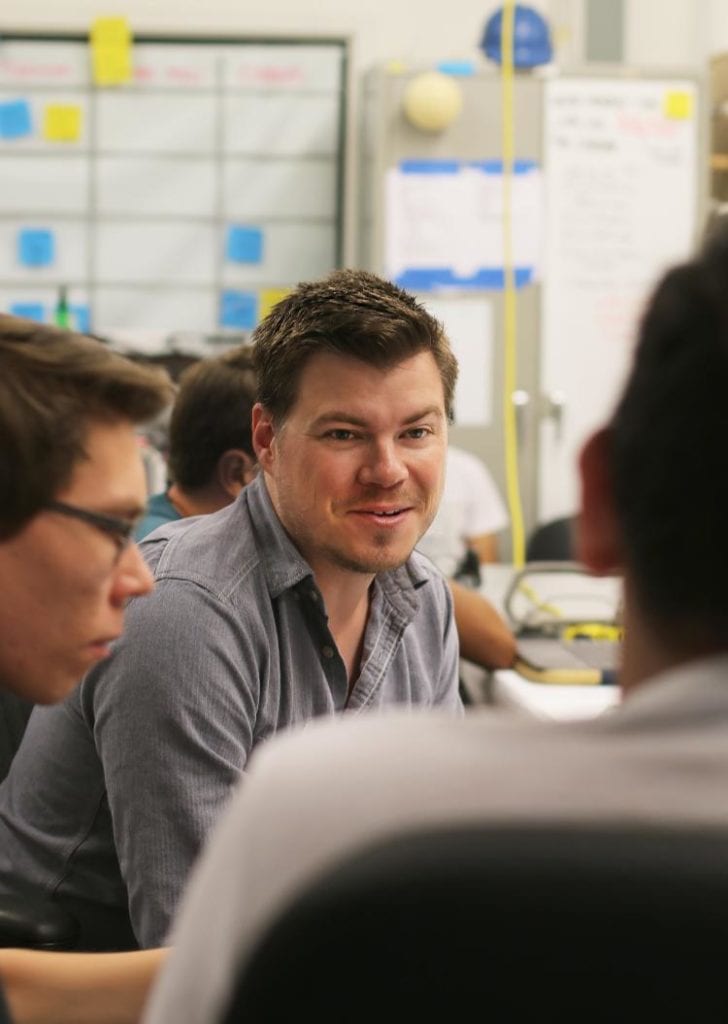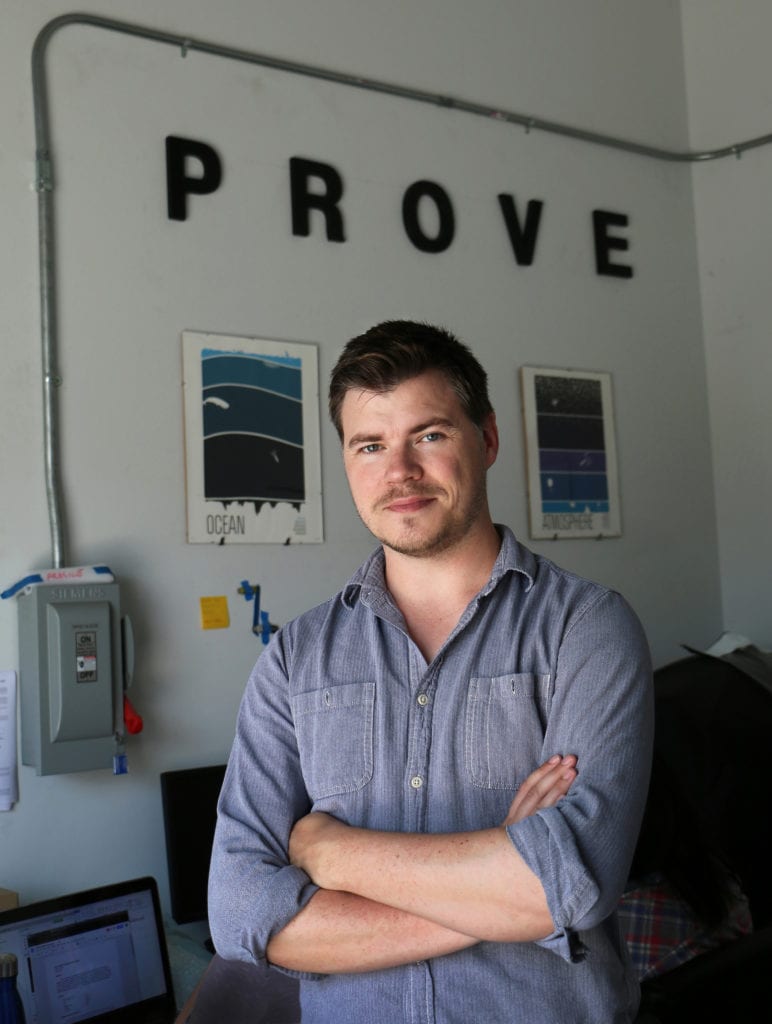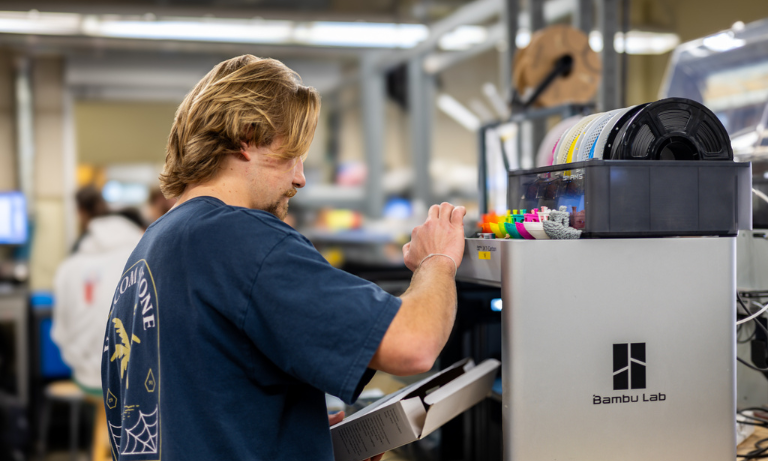During a temporary job at Australia’s Taronga Zoo, Graham Doig was curiously drawn to a leopard seal, fascinated by how it used both its front and back fins to launch itself out of water.
“You can’t turn your Ph.D in fluid dynamics off while you’re looking at this thing swim,” said Doig, now an assistant professor in the aerospace department. “I was watching it, thinking, ‘How is it producing so much thrust?’”
Years later, that seal would inspire him to launch one of his latest intriguing student projects – a human-powered submarine that moves like aquatic wildlife.
“There’s a lot to learn from how animals have been optimized,” he said. “We can look at what nature is doing and copy the motion and frequency.”
A champion of Cal Poly’s Learn by Doing approach, Doig’s students are also working on a rover for Venus (at NASA’s request), an electric supercar that can drive 1,000 miles without a charge, a solar-powered plane and a solar car designed to break a world speed record.
Doig is clearly interested in things that move. But he didn’t even recognize his obsession while growing up in the U.K.
“I was looking through old photographs of when I was a kid,” he said in his soft, Scottish accent. “And I realized all of these photos are of me with a toy helicopter or in a toy car or playing with a toy train or spaceship.”
The child of language teachers, Doig went on to study engineering – but only because his friends did.
“I hated it for two or three years,” he said.
Unlike Cal Poly, he said, the University of Glasgow’s engineering program didn’t entail hands-on opportunities. But eventually he found avenues for that while pursuing his doctorate at the University of New South Wales in Australia, where much of his extended family lives.
After getting his doctorate, he landed a job designing ventilation systems in Sydney. But, he found, ventilation was stifling.
“I just couldn’t stand that the only thing I could do from 8 o-clock to 5 o-clock was sit and simulate that ventilation system,” he said. “It stopped the mind from wandering.”
After deciding to pursue academia, he worked at the zoo for a year.
“I was not qualified to do any job there,” he said. “They hired me as a person to help their behavioral science unit. They said, ‘You’re an engineer. You can make a hammock for a chimpanzee or something.’”
While designing animal toys and enclosures, he also took data for behavioral research, which is how he became fascinated with the leopard seal, which had washed ashore in Australia after suffering a shark bite.
“We had the world’s only leopard seal in captivity,” he said. “So I got to see what almost nobody else in the world ever gets to see, which is a leopard seal swimming around in its enclosure all day.”
The seal’s methods would remain in the back of his brain. Meanwhile, he would have teaching stints in Australia and the U.S. Naval Academy before landing at Cal Poly four years ago.

While at Cal Poly, Doig modernized the wind tunnel. As a result, several major companies, including Tesla, have used the tunnel for testing – allowing Cal Poly students to gain valuable industry experience.
Meanwhile, Doig challenged students to think beyond traditional studies. Having created record-breaking solar cars himself, he tasked his students with breaking the world speed record for a solar car, using the Cal Poly Prototype Vehicles Laboratory (PROVE) he founded.
“A lot of students on the solar car team are surprised when they get an email from me at 2 o-clock in the morning,” he said. “’Dr. Doig is up at 2, thinking about the solar car?’ But that’s my interest – building a racing car to break a world record.”
He does have other interests – hiking and spending time with his two daughters, for instance. But many of his hobbies relate to his academic pursuits.
“If I’m interested in how birds fly or seals swim, then I just find a couple of students and start looking at it,” he said. “You can’t do that in other sectors.”
Students might need to have perseverance to work on his projects, but they can learn from his experience.
“They can see that I have done that kind of thing before, so they know it’s possible if you keep going,” he said.
However, not everyone is up for spending countless hours trying to build a solar car or a submarine in their free time.

“These are the most cutting-edge, exciting, unusual, one-off, out-there projects you can connect to,” he said. “But it’s a different mindset from, ‘I’m looking for good grades, the safe job and the big company at the end of it,’ which is great for a lot of students – that’s what they want. But the ones who devote themselves to the projects tend to be the ones that see greatness or a more unusual path ahead of them.”


